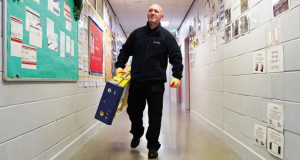
The past few months will have posed a significant challenge for facilities management. While operations in some sectors, such as cleaning or security services within healthcare or essential retail have been ramped up; other areas, including foodservice, non-essential retail and offices will have seen a substantial decrease in requirements.
For those areas which have required increased attention, ensuring there are enough employees to fill demand has been a challenge, along with ensuring they have access to the appropriate PPE in order to do their job. As restrictions ease, the facilities management industry now has the challenge of returning people safely to work. With so much uncertainty accurate forecasting plays a huge role – but is also something that has never been more difficult.
This is where the need for the right technologies and tools to provide the most accurate insights come into their own. The latest workforce management and human capital management (HCM) technologies leverage emerging technologies such as artificial intelligence (AI) and machine learning (ML) forecasting algorithms to create optimal schedules, enabling managers to accurately forecast demand and align labour accordingly. Additionally, insights are provided into how many employees are scheduled, where they will be located and at what times, to ensure adherence to safety guidelines from governmental and health officials.
FLEXIBLE SCHEDULING
Employee wellbeing remains a top priority for organisations as they look at re-entry and reopening plans. Physical and mental fatigue and burnout are prevalent, as many essential organisations quickly realised as a direct result of COVID-19 demands. The challenges being faced vary and are deeply personal and situational, including caring for extended family members, facilitating childcare, or emerging from total isolation. Emotions are high, and schedules are thin, so there needs to be a more flexible attitude to scheduling than previously. With continuing uncertainty over childcare for example, there is a need to be flexible and agile when it comes to scheduling work – so organisations must invest in the right tools and know-how to enable them to combat this very real danger of burnout. Without doing so, facilities management companies run the risk of exacerbating the problems associated with an unengaged, burned out workforce.
PROTECTING THE BOTTOM LINE WHILE ENSURING COMPLIANCE
For facilities management, time tracking technologies have been a long-term fixture. But following the European Court of Justice’s ruling (1) last year around requirements for time-tracking software systems in order to ensure full compliance with labour laws, many facilities managers will have already assessed their systems. They will have been looking into how they can bring an even greater level of detail and accuracy to the time-tracking process, helping them to more easily identify if employees are being overworked or if their shifts are being scheduled in a fair manner.
As the old adage says, time is money, deadlines are strict, and demand is incredibly hard to anticipate manually. This is where the best modern HCM solutions are proving most beneficial to facilities management companies looking for faster, more efficient and far more profitable digital, cloud-based tools to track labour cost, performance and efficiency in real-time. Ultimately, the insights provided through the right HCM technology can mean the difference between profitability or loss.
OBTAINING ACCURACY AT A TIME OF UNCERTAINTY
The latest workforce management and HCM solutions(2) allow facilities management to use the most accurate forecasting algorithms, helping them to achieve compliance and operational agility in a number of ways.
Accurate forecasting ensures that employee schedules can be created to meet demand, as well as providing an insight into the workforce at a time of so much uncertainty. Workforce management technology can keep track of hours worked, ensure adequate breaks for employees and run safety checks such as conducting random drug tests when employees clock in and out.
Workforce management and HCM tools are also essential technologies to provide the real-time data needed to ensure the facilities management industry as a whole is doing everything it possibly can to help the UK avoid a potential ‘second wave’ of COVID-19. Accurate real-time workforce data provides insights to help companies make quick, vital decisions in times of crisis, helping them to closely control margins, meet project timelines and, most importantly of all, ensure an engaged, safe and happy workforce.
For example, if and when any further government restrictions are enforced, facilities management organisations need to be able to once again dial up or dial down operations in areas most or least needed. By having a workforce management solution in place, companies can understand who they need, when and where, as soon as possible.
With no real end of the current crisis in sight, using real-time labour data to manage teams also gives managers the insight and analytics needed to avoid understaffing or overstaffing, thereby helping to control margin.
In summary, the next few months are not going to be an easy ride for any sector and the facilities management industry is no exception. While many organisations are eager to hit the ground running as soon as possible, it is critical that employee wellbeing and compliance are at the top of business leaders’ agendas if they are going to weather the current storm.
Achieving margin, ensuring an engaged workforce and regulatory compliance requires real-time data about employees and their activity — whether they are working in an office or out on location.





